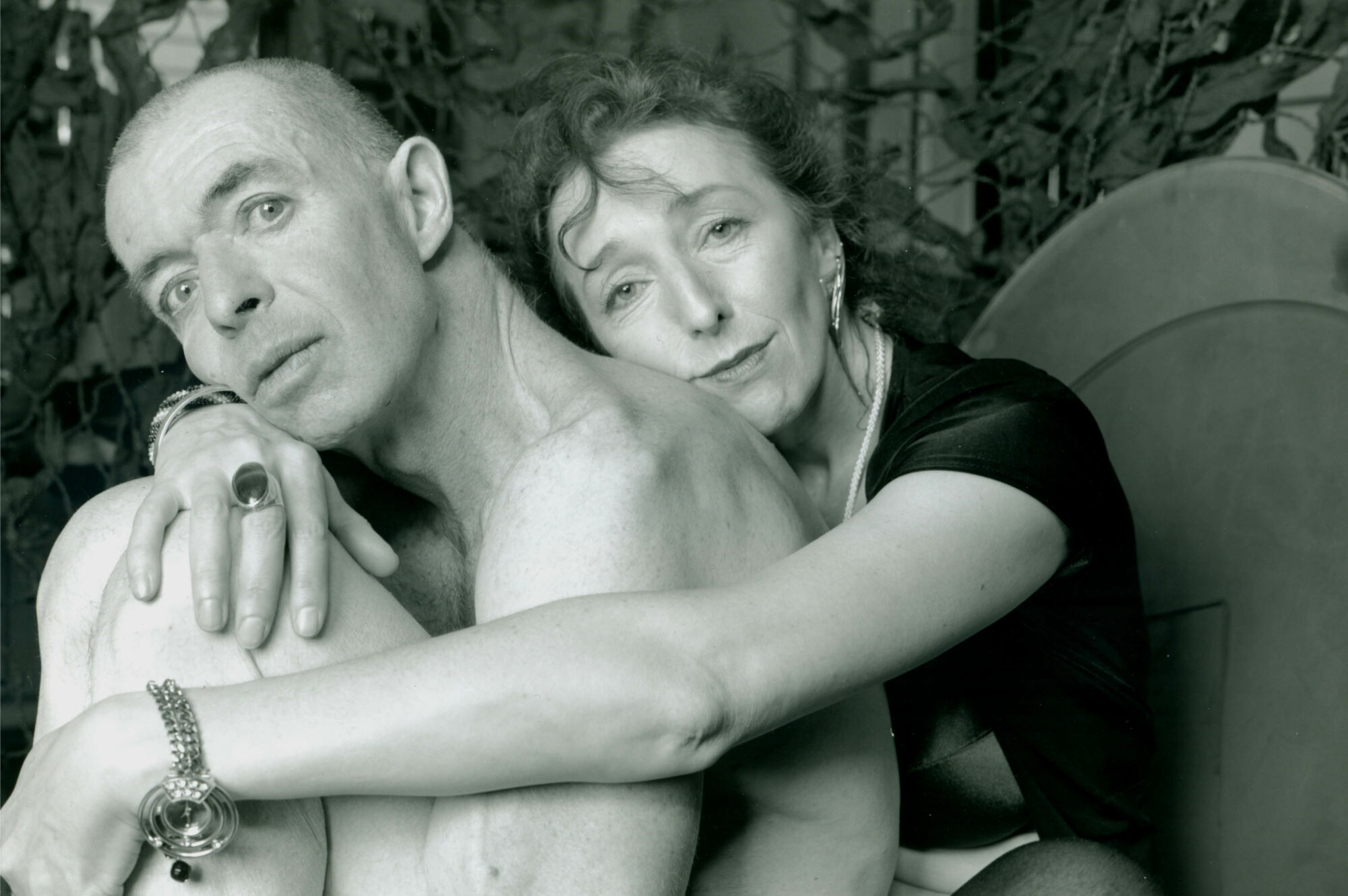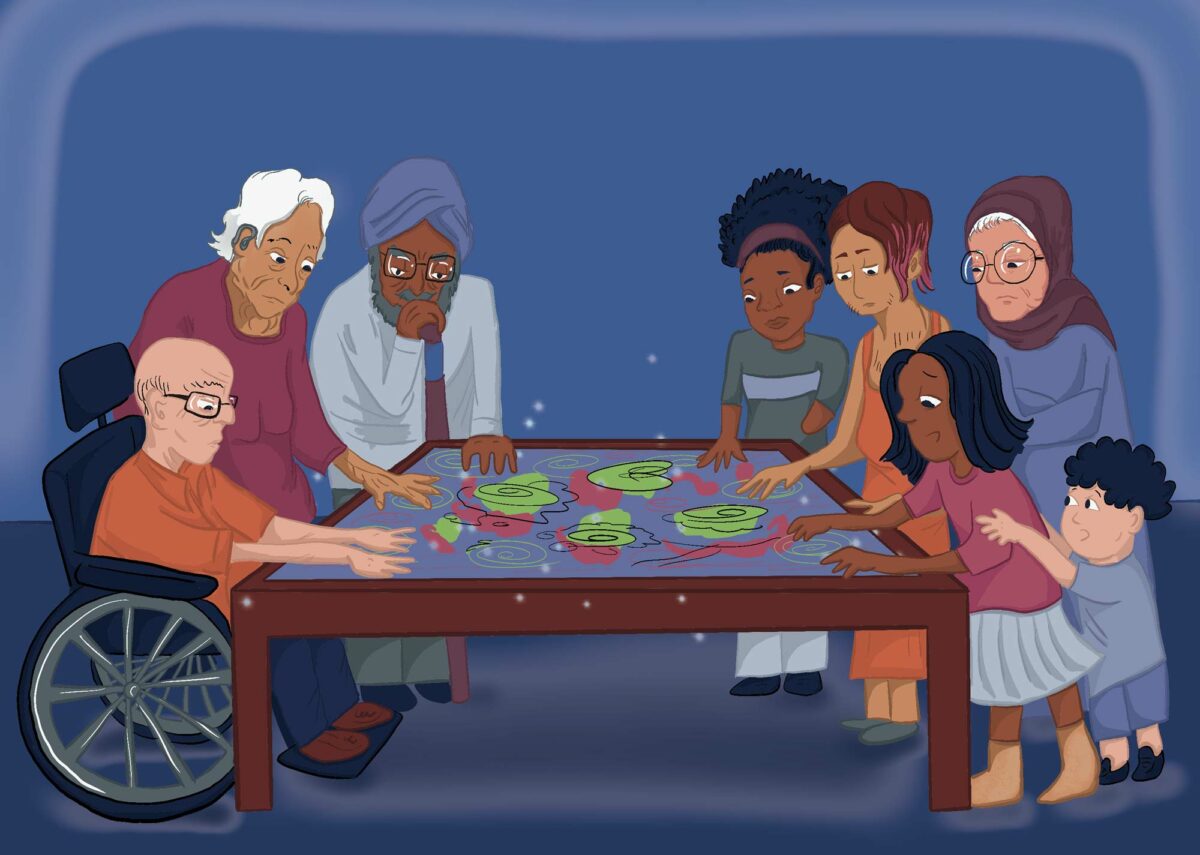Table of Contents
Aging Art Can Change Perspectives
Art can shift simplified understandings of aging as a period within a chronological lifespan to a much more encompassing consideration of aging as a sociopolitical identity. Many videos and creative works breathe new life and vitality into socio-cultural representations of aging experiences “including those of Anishinaabe aging, aging with and into dementia, and aging queerly” (Changfoot et al., 2022, p. 7).
Such a method offers one way to productively disrupt the logics of “successful aging” that reinforce heteronormative, cisgender, white, colonial, and middle-class experiences as model experiences of aging.
Changfoot et al. (2022), p. 3
Aging Through Art and Storytelling
Art and story can offer us different methods and modes of resistance that exist outside dominant narratives, enabling viewers to explore creative ways to discursively disrupt or challenge a perceived “crisis” of aging. These three featured pieces invite us to reflect on our own assumptions and potential anxieties about aging. Some reflect experiences of aging as welcomed and to be savoured, showing an alternative perspective for proudly aging. These works share new/old worldly experiences of aging that forefront relationships and community as interconnected in ways we may not have considered.
Photography: Age and Creativity by George Steeves

This set of six portraits by Halifax-based photographer George Steeves was featured in Bodies in Translation: Age and Creativity, an exhibition presented at MSVU Art Gallery, Halifax, from September 8 to November 12, 2017. Steeves’ evolving perspective on aging is captured in his work.
Artist Statement
I have had an intense relationship with elderly people my entire life. Now at 74, and having suffered a stroke, I am unequivocally one of them myself. I was born in wartime 1943, when elderly people and women dominated the social space. After my father belatedly returned in 1948, our family was not a happy one.
I compensated for this by maintaining and extending my network of highly educated elderly widows and spinsters. I was taught far more by them than by the school system. I can recall all their names even now and see them clearly in my mind’s eye.
The date on my darkroom sink is 1974. It is still in full operation. The six pictures on display for this exhibition are selected for the purpose of matching them to the exhibition thesis from a massive photographic archive called Excavations on which I laboured for ten years. I have never focused on elderly people as subjects for my cameras, but when they came my way I treated them with the same probing regard as everyone else. I see and view aging as a process of subtraction. One by one abilities and capabilities are taken away, but paradoxically I am consoled by an expanded scope of emotional awareness.
Bio
Born in 1943, Steeves has practised chemical photography since boyhood, but it wasn’t until completing university that he had the time or means to pursue it intensively. The date on his darkroom sink (Halifax) is 1974 and it is still in full production. Steeves was employed for 39 years as a research engineer at a number of laboratories. This provided the reliable economic engine necessary for completely independent photo work. For three decades Steeves worked about 70 hours a week at his job and on his art in equal measure. The burden on his personal life has been considerable.
Steeves has produced about 40,000 negatives and 4,000 exhibition prints. His exhibitions have been mounted principally in Quebec and northern Europe. Several public collections have acquired his work.
Steeves’ primary subject matter has been the nude. He sardonically refers to himself as a “body mechanic.” His major works have blended nudity with extended portraiture. Years, sometimes decades, have been spent photographing a small number of fearless female collaborators. Sometimes the images have been supplemented by biographical texts. The objective for Steeves always has been absolute and complete exposure.
View the portraits (content note: nudity)
Video: Vintage Plumbing and Wiring by MJ Sakurai
MJ Sakurai’s video Vintage Plumbing and Wiring animates aging bodies as sexual in unexpectedly delightful ways.
“By likening her sexual sensations and experiences to vintage plumbing and wiring, MJ asserts the exquisite sensuality of aging bodies. Her layering of images and sounds of porcelain fixtures, pipes, and wires with those of aging limbs, hair and skin teaches us something about the “vitality of vintage sexuality as life force energy” (Rice, 2018).
Artist Statement
ART IS IMPORTANT!
Seventy-plus years of existence: breathing, listening, feeling, observing and thinking with varying degrees of depth, clarity and success. Forty-plus years among the working poor as a single parent of two daughters (now in their second age) and solo.
Retired in 2012 to Mahone Bay and now occupied with an array of voluntary cultural and physical activities. With exception of bout of Lyme disease in 2015, enjoying excellent health. Looking forward with my crone and geezer pals to older age before being gathered in.
As we are sensual beings, sexuality is a part of vital healthy aging. Our plumbing for intimate connection may be functional for longer than generally recognized, and poignant couplings have always been possible through our wiring. Surely, as life force sensual energy conducted by our wiring continues to manifest after we expire. This is a six-minute video (interlaced, colour, monaural audio) with selected images of antique knob and tube wiring, plumbing fixtures and piping, and vintage electrical equipment for woodworking, blacksmithing and metal shop interlaid with body images. The voiceover addresses some basic nuts and bolts issues of sensuality in our third age.
Bio
MJ (Mary Jean) Sakurai completed a BA in Criminology at the University of California, Berkeley, in the 1960s. In subsequent decades she worked in a variety of administrative and clerical positions, including at the Nova Scotia College of Art and Design in the 1970s. Since 1991 she has been involved in a wide array of community-based activities with Nova Scotian organizations such as Atlantic/Halifax Jazz Festival and JazzEast Music Education Gala, Atlantic Fringe, Kinetic Studio, GraineryFood Coop, Raging Grannies, Scotia Festival of Music, Mahone Bay Refugee Sponsorship Group, and East Coast Tango Society. She also undertakes freelance editorial work.
In 2008 Sakurai received a Media Arts Scholarship from the Centre for Art Tapes, Halifax, and produced the six-minute video Vintage Plumbing and Wiring. The artist lives in Mahone Bay, Nova Scotia.
Video: Time Travel by Nadine Changfoot
A cyclical or synchronic sense of time that connected past with the present, where they were younger and also older, and a temporality in which she felt resistance and acceptance […] they found a different and shared temporality where linearity gave way to multiple timescapes in which past, present, and future could cohere simultaneously.
(Changfoot et al. 2022, p. 6)
Reflection Questions
- How do these artworks highlight ways of aging that differ from what you are commonly exposed to through popular media?
- In what ways can these three examples offer counter-narratives that disrupt conceptions of “successful” aging as able-bodied, able-minded as well as a linear, forward-only process?
- What do these examples suggest to you about the ways personal histories, cultural values, and political landscapes change over a lifetime?
- How might these diverse representations of becoming older create new possibilities of aging futures?
An illustration by Naheen Ahmed of a group of people touching and interacting with a tactile artwork of multicoloured spirals on a table. To the right, an older white man wearing black glasses and orange shirt and using a wheelchair rests his hands on table. Behind him an older woman with tan skin and short white hair leans forward to touch the artwork. Next to her, an older brown man with a blue turban and grey beard leans on his cane with one hand and touches the art piece with his other hand. On the right side at the front, a brown girl with a pink top and blue skirt stands with both hands on the table. A young white boy with curly dark blue hair stands behind her, tugging on her shoulder. Behind the two children, an older woman with pale skin stands with her hands crossed over her body. She is wearing round glasses, a pink hijab, and a blue abaya. Beside her stands a non-binary person with short brown hair with pink highlights. They are wearing an orange dress and one of their hands is on the art piece. At the centre left of the image, a young black woman with curly hair and an amputated arm touches the art piece. She is wearing a gray striped top and white pants.






